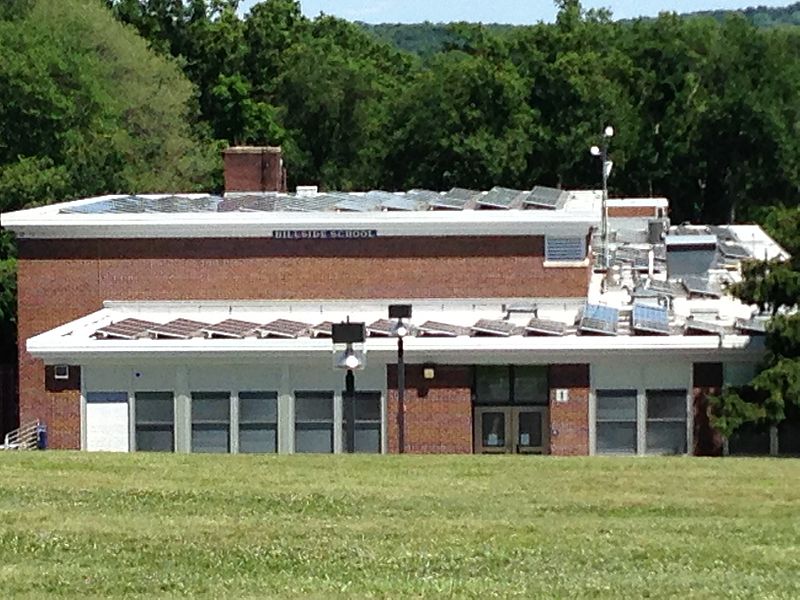The city of Beaverton, OR, is getting a new solar array that will offset energy use at an underground reservoir, saving taxpayers $95,000 per year, with no upfront cost. Ventura County, CA, has a 1-megawatt solar array on its jail facility, that’s cash flow positive. Denver, CO, has nearly 4 megawatts of solar, with power sold to the city on contract and no upfront cost.
If cities can cut their energy bills and save energy from day one, what’s standing in the way of a PV pave-over of every public building in America with a suitable roof?
ILSR answers this question (and more) in its new report, Public Rooftop Revolution, released on June 4, 2015
Opportunity
The potential for rooftop solar PV (on any building) to meet American electricity demands is phenomenal, with enough suitable, sunny rooftops to provide nearly 20% of the power in every state.
Public buildings are in almost every community, many with the flat roofs perfect for solar. For example, K-12 public schools in Minnesota could host enough solar to power nearly 125,000 homes. In New York City, Mayor Bill deBlasio’s new energy initiative promises to install at least 100 megawatts of solar power on public buildings. In Washington, DC, the city recently issued a request for private sector partners to install 10 MW of solar on nearly 50 city-owned buildings.
Solar potential on schools is pretty remarkable, according to SEIA and the Solar Foundation. In Austin, TX, public buildings could host over 50 MW of solar. In San Francisco, it’s 31 MW. If the share of public building space for schools in these cities mirrors Minnesota (where schools represent about half the square footage of all public buildings), then all public buildings (schools, libraries, city property) in each city could host nearly 100 MW or 62 MW, respectively, of solar.
The solar potential is matched by the solar economic opportunity. Maximizing rooftop solar on schools in Minnesota could cut energy bills for the school system by 30%, saving $110 million per year. Every dollar saved is a public good, another dollar that can be spent on teachers, or librarians, or police officers. And with solar leasing or power purchase agreements, schools can tap into this energy savings opportunity with very little upfront money. [note: direct solar ownership typically trumps these third party ownership models, but not when federal incentives are inaccessible to the public sector]
Policy Barriers
As mentioned above, the poor policy choice to use the tax code for federal solar incentives as tax credits makes the public sector ineligible. Additionally, although the 3rd party ownership model has arisen to solve this design flaw, it’s only legal in about half of U.S. states. In the remainder, state law either prohibits or is ambiguous enough to make this deal structure too risky to attempt.

What’s Holding Cities Back?
Despite the policy barriers facing cities going solar, there millions of unused, publicly owned rooftops in places where the state and federal rules are not barriers. Why?
It could be bureaucracy. A representative of Borrego Solar said of the process to install solar on a city building in Beverly, MA, that, “the approval process involved five city council meetings, three subcommittees and two public meetings.”
It could also be city inexperience with electricity infrastructure. Despite its rapid growth in the past decade, prior to this time few cities had ever owned or installed electricity generation of any sort on their property. And admittedly, the complexity of net metering, incentives, and ownership structures pose a substantial barrier to determined solar lovers, whether or not they are cities.
It could be something else entirely. Have a story to share about getting solar on a public building in your community? Have you worked with a city to install solar? Share your story in the comments or with me at jfarrell@ilsr.org!
ILSR plans to further investigate the dearth of solar on city public buildings over the coming months, and your examples can help use tell the story.
Photo credit: Wikipedia user Z22
This article originally posted at ilsr.org. For timely updates, follow John Farrell on Twitter or get the Democratic Energy weekly update.





